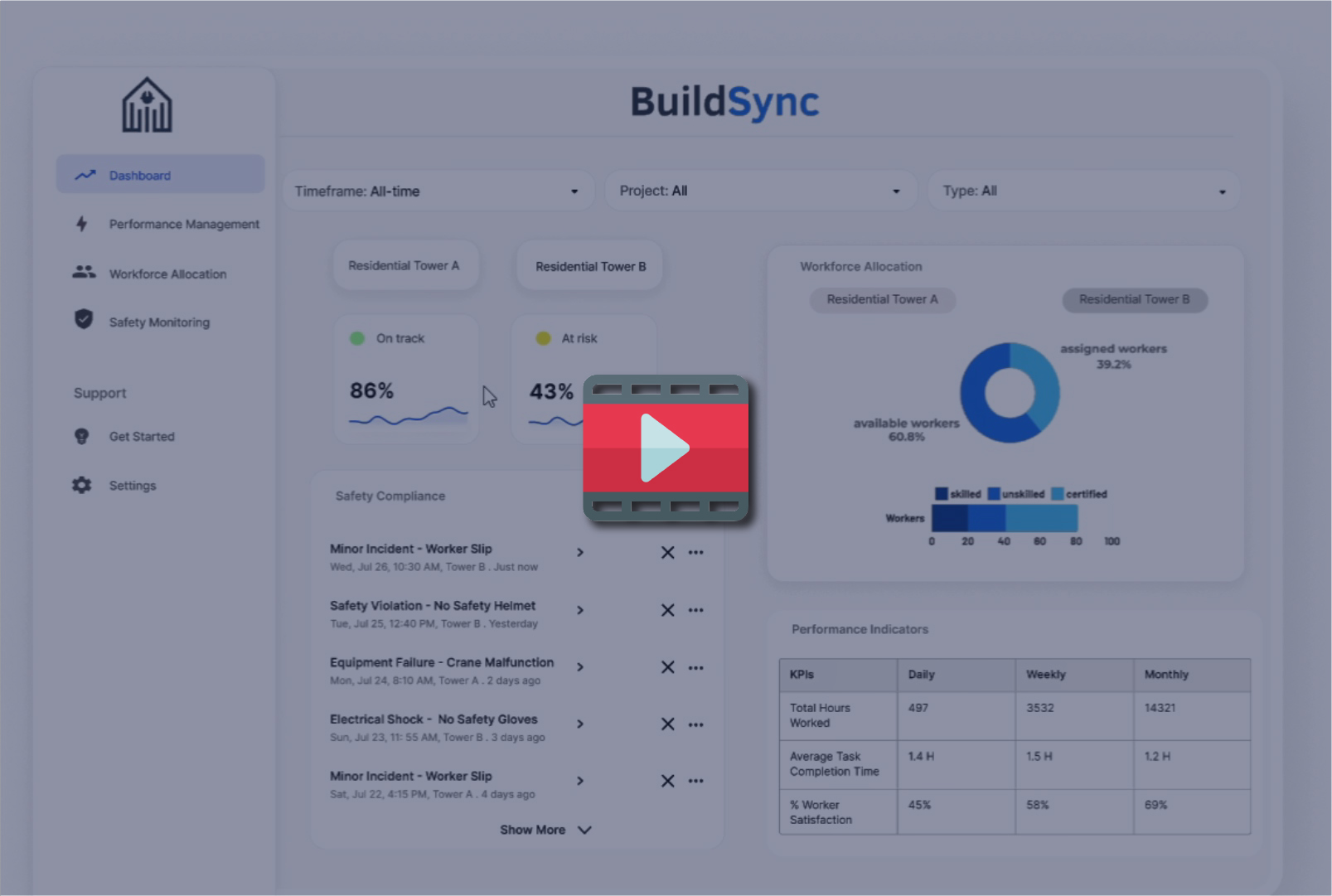The construction industry is facing a growing challenge: a shortage of skilled labor. With aging workforces, fewer new entrants, and an increasing demand for large-scale projects, construction companies are feeling the pressure to find and retain qualified workers. This shortage affects productivity, quality, and project timelines, and it’s a challenge that won’t be solved overnight. To address this, companies need to explore proactive strategies to attract, develop, and retain talent in innovative ways. This article dives into why the shortage is happening and what companies can do to build a stable and skilled workforce.
Understanding the Skilled Labor Shortage in Construction
Before diving into solutions, it’s essential to understand the causes behind the shortage. Here are some key contributing factors:
- Aging Workforce: A significant portion of skilled construction workers are nearing retirement. According to industry reports, the average age of construction workers in the U.S., for example, is over 40, and as these workers retire, there aren’t enough younger workers entering the field to fill their shoes.
- Perceptions of the Industry: Despite the demand for skilled workers, construction is often seen as physically demanding and dangerous, with limited long-term career prospects, deterring younger generations from entering the field.
- Growing Demand for Infrastructure and Housing: The rise in infrastructure projects and housing developments has increased the need for skilled workers. With limited supply and high demand, companies face fierce competition for the talent that is available.
- Lack of Skilled Training Programs: In recent decades, trade and vocational schools have diminished in number, limiting access to essential training for skilled trades. With fewer programs, fewer young people are equipped with the necessary skills to enter the workforce.
- Technological Advancements: With the industry increasingly moving towards digital and automated solutions, a different skill set is required. Workers need to be not only skilled in physical labor but also adept at using new tools and technology, and many haven’t received training for this transition.
Strategies to Attract and Retain Skilled Construction Workers
With these challenges in mind, construction companies need to adapt and explore various approaches to ensure a sustainable, skilled workforce.
1. Promote Construction as a Viable Career Path
One of the key challenges for the industry is altering the perception of construction careers, especially among young people. Efforts to present construction as a rewarding, sustainable career with clear advancement paths are crucial:
- Outreach and Education Programs: Partnering with high schools, colleges, and vocational programs can help educate students on the career opportunities available in construction. Participating in career fairs, offering scholarships, and even providing internships or apprenticeships can help create awareness.
- Highlighting Success Stories: Companies can benefit from showcasing employees who have built successful careers in construction. Sharing these success stories through videos, blogs, and social media can help shift perceptions and attract young people.
2. Invest in Training and Upskilling
As technology evolves, the skills required for construction work are shifting. By investing in training and development, companies can build a more versatile and engaged workforce:
- In-House Training Programs: Many companies now provide in-house training to upskill their workforce. Programs focusing on digital tools, safety, and project management not only make workers more effective but also increase job satisfaction.
- Partnerships with Trade Schools and Colleges: Collaborations with trade schools and community colleges help create specialized programs tailored to the needs of the construction industry, ensuring a steady pipeline of skilled graduates.
- Cross-Training: Providing cross-training to help workers gain skills in different areas allows for greater flexibility. For instance, a worker trained in both carpentry and site management can take on various tasks, improving resource allocation and job satisfaction.
3. Offer Competitive Compensation and Benefits
To attract top talent, companies need to offer competitive wages and comprehensive benefits. As the demand for skilled labor grows, so does the need for attractive compensation packages:
- Regular Salary Reviews and Increases: To remain competitive, companies should assess salary benchmarks regularly and make adjustments as needed.
- Performance-Based Incentives: Providing bonuses or incentives based on performance can also motivate workers to stay longer and work harder.
- Comprehensive Benefits: Health insurance, retirement plans, and paid time off are standard benefits that skilled workers expect. Additional benefits such as mental health support and wellness programs can also be a differentiator.
4. Create a Positive and Safe Work Environment
A strong company culture that prioritizes safety, respect, and growth can go a long way in retaining employees. Construction work is often physically demanding and challenging, so prioritizing a supportive work environment is essential:
- Prioritize Safety: Safety is paramount in construction. Companies should implement stringent safety protocols and offer regular safety training, making it clear that employee well-being is a top priority.
- Foster a Culture of Respect and Inclusion: Embracing diversity and creating a supportive workplace where all employees feel valued encourages retention and attracts new talent. This is especially important in a traditionally male-dominated industry like construction, where diversity is often lacking.
- Employee Recognition: Recognizing hard work and contributions, whether through formal awards or informal acknowledgments, helps employees feel appreciated.
5. Adopt Flexible Scheduling and Work-Life Balance Initiatives
Work-life balance has become increasingly important across all industries, including construction. Flexible scheduling options can make construction jobs more appealing:
- Shift Flexibility: Allowing workers to choose shifts or offering rotating schedules can provide a level of flexibility not commonly seen in construction, helping to attract younger workers who prioritize work-life balance.
- Reduced Work Weeks or Job Sharing: For some roles, companies might consider reducing the number of hours in a standard work week or offering job-sharing options. This flexibility can make the job more appealing, particularly for workers with families.
6. Leverage Technology to Appeal to Younger Workers
Young professionals are more attracted to careers that incorporate technology. By adopting digital solutions, companies can position themselves as modern and forward-thinking employers:
- Digital Workforce Management Tools: Using digital platforms for scheduling, communication, and project tracking can streamline operations and make it easier for workers to manage their tasks.
- On-Site Tablets and Software: Providing tablets or smartphones equipped with project management and safety apps can make day-to-day work more efficient. These devices also appeal to younger workers who are comfortable with digital tools.
- Virtual and Augmented Reality: Technologies like VR and AR are starting to be used in training and planning, allowing workers to visualize projects before breaking ground and practice tasks in a safe, virtual environment.
Building a Sustainable Workforce in the Construction Industry
Addressing the skilled labor shortage in construction requires a multi-faceted approach. Companies that actively promote construction as a viable career path, invest in their workers, and provide a safe, flexible work environment will be better positioned to attract and retain skilled labor. The strategies above can help construction firms create a stable, sustainable workforce that can meet the demands of the industry in the years to come. While the shortage is a challenge, it also presents an opportunity for companies to build better, more resilient workplaces for the future.



